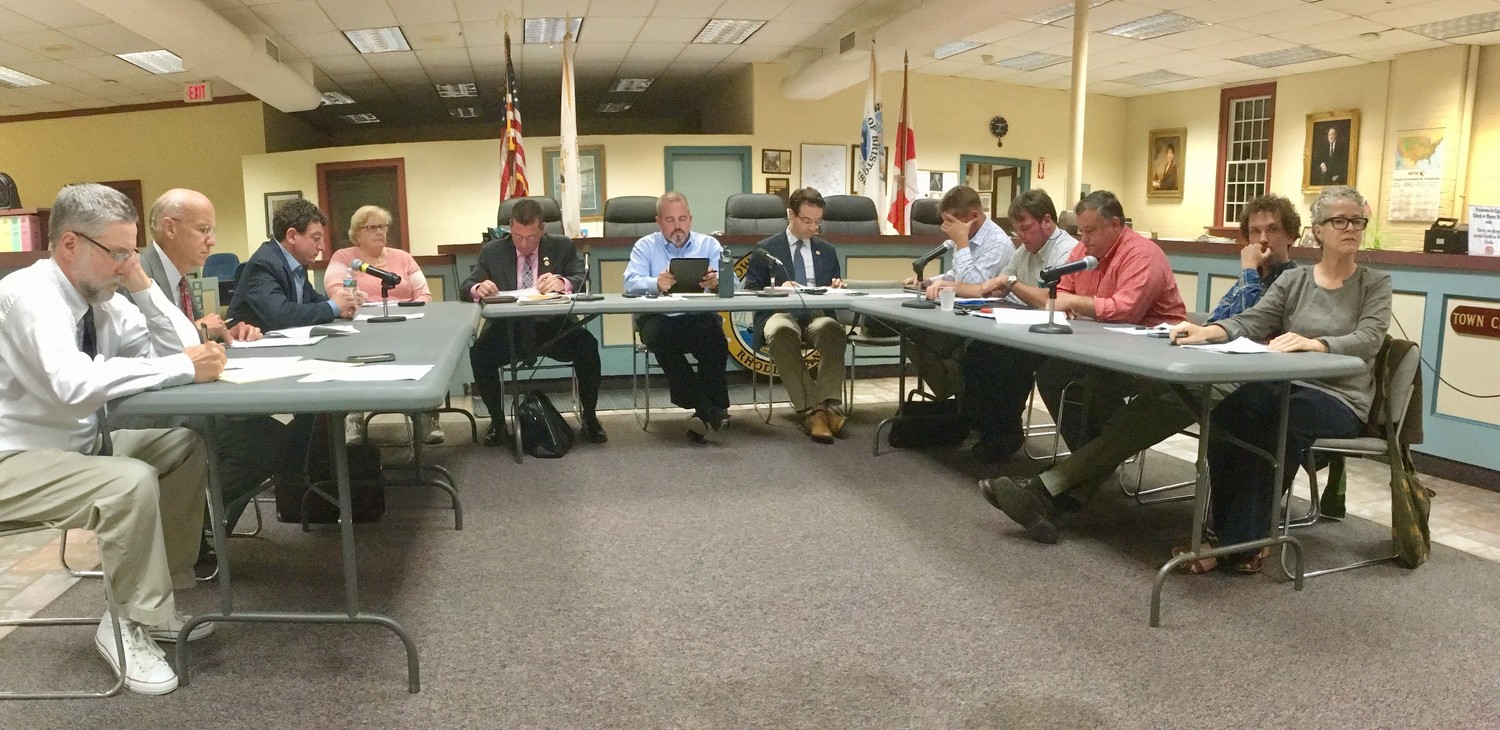Will Bristol and Warren spend millions more on schools?
School leaders are asking for a long-range discussion about a massive funding gap
The gap is $8 million.
That’s the anticipated shortfall in school funding three years now. It’s the number Bristol Warren Joint Task Force Committee Chairman Andy Tyska and Bristol Warren Regional School District Superintendent of Schools Mario Andrade are focusing on as they look to the future.
And it’s the number they hope others start thinking about too.
“The numbers are so huge that, structurally, we need to start having long-range discussions about how we support public education,” Mr. Tyska said.
The “numbers” are these:
- $5.2 million more, three years from now, for the school district to keep doing what it’s doing. (This means honoring all contractual obligations and supporting all current programs, staffing and technology, with no new initiatives or programs.)
- $1.6 million less from the State of Rhode Island. (Based on the latest five-year projection for state aid to schools, which was just released last week).

Add them together, along with declines in other forms of school funding, and if Bristol and Warren taxpayers were to level-fund their schools each year, while the schools continue their current programming, the gap would be $8.2 million. So will property taxpayers in both towns close the gap?
“That’s the elephant in the room,” Mr. Andrade said. “This is not a one-year problem. It’s a long-range, structural problem, and we want to develop a long-range strategy to help the school department build budgets and programming that reflect these communities’ values on education.”
To that end, they are starting the “budget” conversation months earlier than normal.
In most of the past 25 years, the school budget cycle begins in January/February and ends in April/May. It includes two meetings of the Joint Finance Committee — one where the two-town board examines the budget and asks questions, another where the board votes to determine how much money the schools get.
This year, the process begins Thursday night.
As chairman, Mr. Tyska has called a meeting (7 p.m. in the Mt. Hope High School cafeteria) to set the table for what’s to come. He wants to ask each town, including its town councils, town administrators and residents, to start talking about how much they are able, and willing, to contribute to the public schools over the next three years.
It’s a significant departure from standard practice, when budget discussions are focused on one year and one adjustment to the tax rate.
“I’ve had experiences growing and building a business over 20 years, and there are things I’ve learned and tools I’ve used,” Mr. Tyska said. “This is a pretty common tool — taking a three-year or five-year look at budgeting, rather than a one-year approach.”
In a meeting Tuesday afternoon, both men said they hope the public is involved in this process, and they encourage participation from residents and taxpayers.
“All the information is there,” Mr. Andrade said. “We know what we’re facing … what we need to know is how these communities are going to respond, and how they value education.”
“We’re hoping to establish trust and transparency in the process,” Mr. Tyska said. “How are we going to maintain services and programs in this high-performing district? We need to start the long-term discussion within the Joint Finance Committee, but it also has to be held at the school committee and town council level, where residents can demand, or protest, support for education.”








